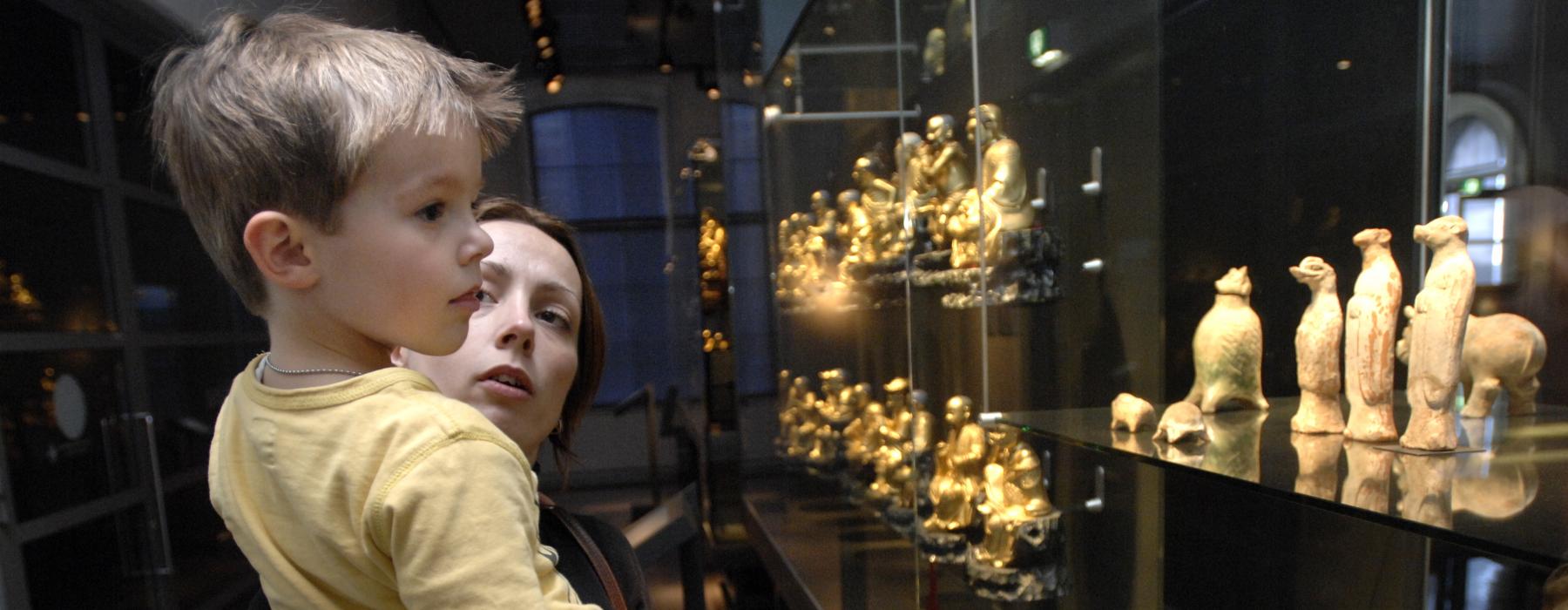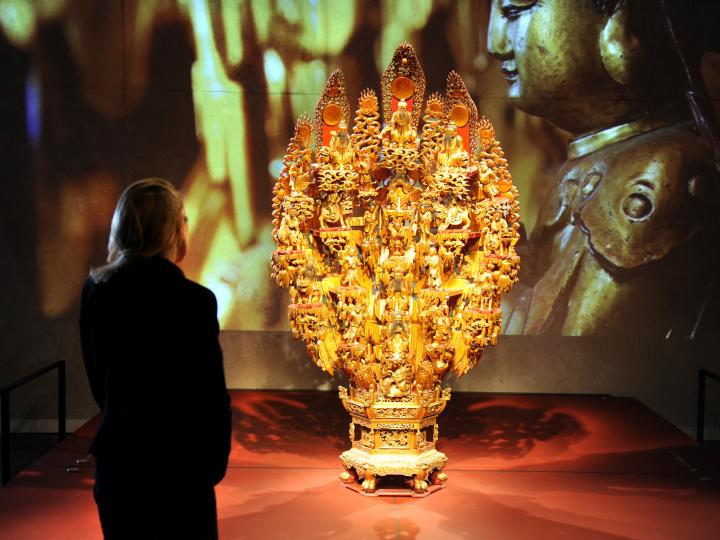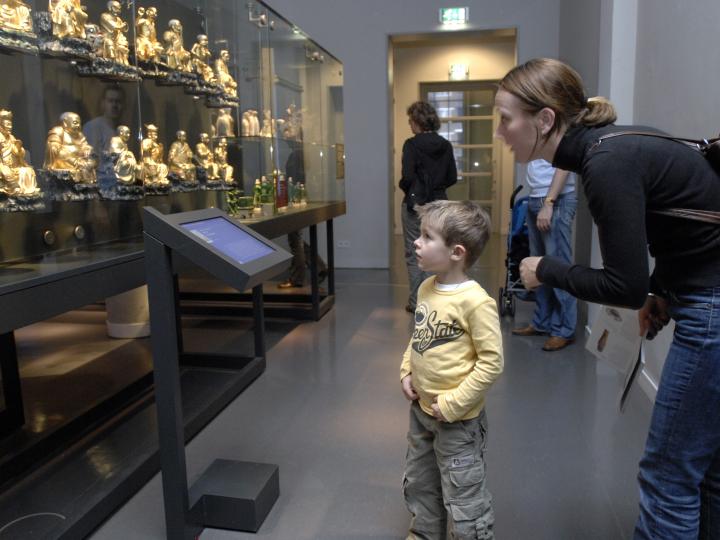
China plays a major role in East Asia thanks to its refined art and technical know-how and the richness of its literary history. Down many centuries the country has maintained links with the outside world via trading routes through Mongolia, Central Asia and India and through its seaports. Through these links, foreign goods, art forms and new religious ideas entered the country. The spread of Buddhism to Korea and Japan brought Chinese calligraphy and political traditions in its wake. Well-known Chinese goods include silk and porcelain, which were exported on an industrial scale from early on. Porcelain, in particular, can be viewed as an early-modern example of an international brand.
Ceramics constituted the most popular export product. Large volumes of celadon and white porcelain found their way to India, the Middle East, Africa and the Mediterranean. The arrival of European seafarers in the sixteenth century sparked a new surge in the demand and supply of ceramics. Europeans particularly valued the blue and white decorative porcelain.


